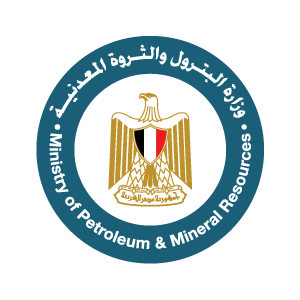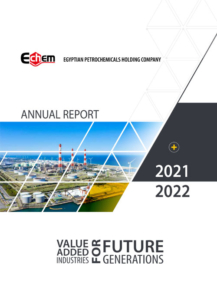Medium Density Fiberboard (MDF)
This article aims to explore the pivotal role of MDF within contemporary petrochemical sectors, shedding light on its properties, production processes, applications, and broader implications for the industry.
Understanding Medium Density Fiberboard (MDF)
Definition and Composition
Medium Density Fiberboard (MDF) is an engineered wood product composed of wood fibers, resin binders, and additives. The manufacturing process involves compressing wood fibers with resin under high pressure and temperature, resulting in a dense and uniform panel with consistent properties throughout.
Properties of MDF
Density: Medium density, typically ranging from 600 to 800 kg/m³
Strength: Exhibits high strength and dimensional stability
Versatility: Can be easily machined, cut, and shaped into various forms
Smooth Surface: Offers a smooth and uniform surface finish suitable for painting, veneering, or laminating

Production Process
Raw Materials
The primary raw materials for MDF production include wood fibers obtained from hardwood or softwood species, resin binders such as urea-formaldehyde or phenol-formaldehyde, and additives for enhancing performance and properties.
Manufacturing Steps
Fiber Preparation:
Wood fibers are obtained through mechanical refining processes, such as grinding or defibration.
Resin Application:
The wood fibers are mixed with resin binders and additives to form a homogenous mixture.
Forming and Pressing:
The mixture is formed into a mat on a continuous press or multi-opening press, where it undergoes compression under heat and pressure.
Curing and Finishing:
The pressed panels are cured in a hot press to set the resin binder, followed by finishing processes such as sanding, cutting, and edge profiling.
Applications in Petrochemical Sectors
Construction and Building Materials
MDF finds extensive use in construction and building materials, serving as a versatile substrate for interior applications such as furniture, cabinetry, doors, moldings, and decorative panels. Its uniformity, stability, and ease of machining make it a preferred choice for architectural and design purposes.
Packaging and Logistics
In the petrochemical industry, MDF is utilized in packaging and logistics applications for transporting and storing sensitive equipment, components, and materials. Its strength, durability, and impact resistance provide protection during transit and handling, ensuring product integrity and safety.
Industrial Applications
MDF panels are employed in various industrial settings for applications such as workbenches, fixtures, shelving, and enclosures. Its machinability allows for customization and adaptation to specific requirements, making it a versatile solution for industrial environments.

Environmental Considerations
Sustainable Sourcing
Efforts to promote sustainable forestry practices and responsible sourcing of raw materials contribute to the environmental credentials of MDF. Certification programs such as the Forest Stewardship Council (FSC) ensure that wood fibers used in MDF production are sourced from responsibly managed forests.
Recycling and Waste Management
While MDF is not readily biodegradable due to its resin content, efforts are underway to develop recycling technologies and alternative disposal methods. Strategies such as material recovery, energy recovery through incineration, and incorporation of recycled wood fibers into new products mitigate environmental impact and promote circular economy principles.
Future Outlook
Innovation and Technology Advancements
Ongoing research and development efforts focus on enhancing the performance, sustainability, and recyclability of MDF. Innovations in resin formulations, production processes, and waste reduction techniques aim to address environmental concerns and meet evolving market demands.
Market Growth and Expansion
The demand for MDF is expected to grow steadily, driven by increasing construction activities, infrastructure development, and demand for sustainable building materials. Emerging trends such as prefabrication, modular construction, and green building practices further bolster the market prospects for MDF in the petrochemical sector
(FAQs)
What is a Medium Density Fiberboard (MDF)?
Medium Density Fiberboard (MDF) is an engineered wood product made from wood fibers, resin binders, and additives. It is known for its density, strength, versatility, and smooth surface finish, making it suitable for various applications in the construction, packaging, and industrial sectors.
How is MDF produced?
MDF is produced through a manufacturing process that involves compressing wood fibers with resin binders under high pressure and temperature. The resulting panels are uniform in density and composition, offering consistent performance and properties throughout.
What are the advantages of using MDF in petrochemical sectors?
MDF offers several advantages in petrochemical sectors, including versatility, dimensional stability, ease of machining, and suitability for a wide range of applications such as construction, packaging, and industrial uses. Its uniformity and consistency make it a reliable choice for demanding petrochemical applications.
Is MDF environmentally friendly?
While MDF is not inherently biodegradable, efforts to promote sustainable forestry practices, responsible sourcing of raw materials, and recycling initiatives contribute to its environmental credentials. Certification programs and waste management strategies help mitigate environmental impact and promote sustainability in MDF production and use.
What is the future outlook for MDF in the petrochemical sectors?
The future outlook for MDF in petrochemical sectors is positive, with growing demand for sustainable building materials, increasing adoption of green construction practices, and ongoing innovations in production technologies. MDF is expected to play a significant role in shaping the future of petrochemical industries, contributing to sustainable development and environmental stewardship.

Conclusion
Medium Density Fiberboard (MDF) emerges as a versatile and influential material within contemporary petrochemical sectors, offering a wide range of applications, from construction and packaging to industrial uses. Its unique properties, production processes, and environmental considerations underscore its significance in driving innovation and sustainability across industries, paving the way for a brighter and more sustainable future.






